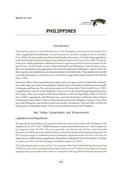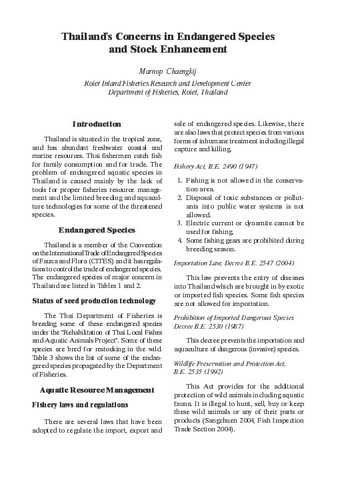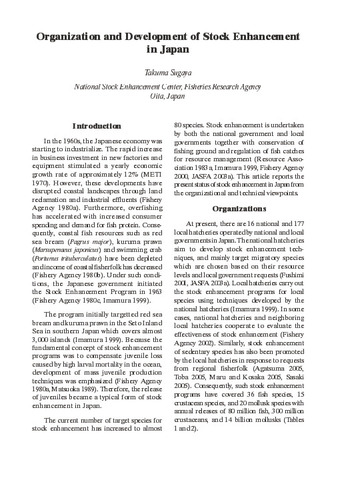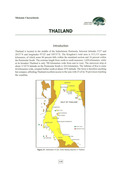Philippines
Share
Abstract
There are five species of sea turtles that occur in the Philippines, namely green hawksbill, olive ridley, loggerhead and leatherback. Several locations for sea turtles nesting are shown in Table 6 (Cruz, 2004). The green turtles are widely found throughout the country, with high nesting aggregations in the Turtle Islands and the San Miguel Group of Islands, both in Tawi-Tawi (Cruz, 1999). The decline in the green turtles population is attributed to massive egg harvests that have been in progress for the past 43 years. The hawksbills are also widely distributed in the Philippines. Unlike the green turtles , there is no information on the aggregation of hawksbill throughout the archipelago. Lagunoy Gulf in the Bicol region has been identified as a development habitat of hawksbill turtles . The population of hawksbill is severely decimated as a result of excessive exploitation of eggs and the high demand for the shell (De Veyra, 1994).
Suggested Citation
Cruz, R. D. (2004). Philippines. In Z. Talib, A. Ali, K. K. K. Yaacob, & M. Mohd. Isa (Eds.), Conservation and Enhancement of Sea Turtles in the Southeast Asian Region (pp. 103-118). Kuala Terengganu, Malaysia: Marine Fishery Resources Development and Management Department, Southeast Asian Fisheries Development Center.
Subject
aquatic reptiles  ; Conservation; legislation
; Conservation; legislation  ; nesting
; nesting  ; fishery regulations
; fishery regulations  ; Incubation; protected areas
; Incubation; protected areas  ; sanctuaries
; sanctuaries  ; training
; training  ; conferences
; conferences  ; lectures
; lectures  ; extension activities
; extension activities  ; exhibitions
; exhibitions  ; tagging
; tagging  ; telemetry
; telemetry  ; tracking
; tracking  ; international cooperation
; international cooperation  ; international agreements
; international agreements  ; research
; research  ; resource conservation
; resource conservation  ; natural resources
; natural resources  ; Protected resources; rare resources
; Protected resources; rare resources  ; resource management
; resource management  ; Philippines; hatcheries
; Philippines; hatcheries  ; eggs
; eggs 
 ; Conservation; legislation
; Conservation; legislation  ; nesting
; nesting  ; fishery regulations
; fishery regulations  ; Incubation; protected areas
; Incubation; protected areas  ; sanctuaries
; sanctuaries  ; training
; training  ; conferences
; conferences  ; lectures
; lectures  ; extension activities
; extension activities  ; exhibitions
; exhibitions  ; tagging
; tagging  ; telemetry
; telemetry  ; tracking
; tracking  ; international cooperation
; international cooperation  ; international agreements
; international agreements  ; research
; research  ; resource conservation
; resource conservation  ; natural resources
; natural resources  ; Protected resources; rare resources
; Protected resources; rare resources  ; resource management
; resource management  ; Philippines; hatcheries
; Philippines; hatcheries  ; eggs
; eggs 
Related items
Showing items related by title, author, creator and subject.
-
Thailand's concerns in endangered species and stock enhancement
Chaengkij, Marnop (Aquaculture Department, Southeast Asian Fisheries Development Center, 2006)The paper provides a comprehensive list of endangered freshwater, brackishwater, and marine aquatic species in Thailand. The Thai Department of Fisheries is breeding some of the endangered species under the “Rehabilitation ... -
Organization and development of stock enhancement in Japan
Sugaya, Takuma (Aquaculture Department, Southeast Asian Fisheries Development Center, 2006)In the 1960s, the Japanese economy was starting to industrialize. The rapid increase in business investment in new factories and equipment stimulated a yearly economic growth rate of approximately 12% (METI 1970). However, ... -
Thailand
Charuchinda, Mickmin (Marine Fishery Resources Development and Management Department, Southeast Asian Fisheries Development Center, 2004)Thailand is located in the middle of the Indochinese Peninsula, between latitudes 5°27' and 20°27’N and longitudes 97°22' and 105°37’E. The Kingdom’s total area is 513,115 square kilometers, of which some 84 percent falls ...




